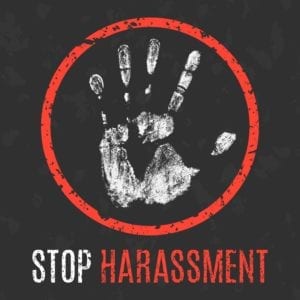DISCRIMINATION/HARASSMENT IN THE WORKPLACE
Harassment in the workplace may be defined as intimidation or aggressive pressure. Oftentimes, it involves unwanted or annoying actions that continued. Regardless, the purpose of harassment may vary. At times it is of a sexual nature. Yet, other times harassment law involves an employer who allows the continued bulling of an employee or an attempt of some employees to have a disliked co-worker leave the workplace. Further, harassment law may even extend to forms of financial collection that are illegal. 2017 marked the emergence of harassment law as a new tort in Canada. This means that employment lawyers and litigation lawyers are able to sue for damages when someone has been harassed.
What Are Examples Of Harassment In The Workplace?
The Alberta Human Rights Commission describes harassment as a form of discrimination and provides the following examples of harassment in the workplace,
- Verbal or physical abuse, threats, derogatory remarks, jokes, innuendo or taunts about appearance or beliefs.
- The display of pornographic, racist or offensive images.
- Practical jokes that result in awkwardness or embarrassment.
- Unwelcome invitations or requests, either indirect or explicit.
- Intimidation, leering or other objectionable gestures.
- Condescension or paternalism that undermines self-confidence.
- Unwanted physical contact such as touching, patting, pinching, punching and outright physical assault.
Another common example of discrimination in the workplace includes instances where the employer terminates employment prior to the employee going on maternity leave, paternity leave, or a medical leave, or they terminate the employee shortly after their return. It is important to note that a leave permitted under the Employment Standards Code RSA 2000 is a protected leave. As such, your employer must either reinstate you to your original position of employment or provide alternative work of a comparable nature upon your return.
What Should I Do If I Believe I Am Experiencing Discrimination In The Workplace?
If you are discriminated against based on a “protected ground” as defined in the Alberta Human Rights Act, you can make a complaint to the Alberta Human Rights Commission. “Protected grounds” per the Alberta Human Rights Act include,
- Race,
- Religious beliefs,
- Colour,
- Gender,
- Gender identity,
- Gender expression,
- Physical disability,
- Mental disability,
- Age,
- Ancestry,
- Place of origin,
- Marital status,
- Source of income,
- Family status, and
- Sexual orientation.
It is important to note that you must make the complaint to the commission within one year of the alleged incident of discrimination.
What If the Workplace Harassment I am Experiencing Does Not Fall Under The Alberta Human Rights Act?
If you are experiencing harassment and or bullying in the workplace but it is not applicable under one of the protected grounds per the Alberta Human Rights Act, you still have recourse under Occupational Health and Safety legislation. The Occupational Health and Safety Act SA 2017, c O-2.1, sets out that “none of the employer’s workers are subjected to or participate in harassment or violence at the work site”.
The definition for Harassment is “any single incident or repeated incidents of objectionable or unwelcome conduct, comment, bullying or action by a person that the person knows or ought reasonably to know will or would cause offence or humiliation to a worker, or adversely affects the worker’s health and safety…”.
Often employees are hesitant to make a complaint to OH&S out of concern of retaliation from their employer. However, employers cannot discipline employees for exercising their right under Occupational Health and Safety laws. Should your employer retaliate against you for reporting an incident, and or incidents to OH&S, you have 6 months to proceed with a “disciplinary action complaint” to OH&S. OH&S, following an investigation, can then require an employer to,
- stop the disciplinary action,
- reinstate workers to their former employment under the same terms and conditions,
- pay the equivalent wages and benefits workers would have earned if the disciplinary action did not happen,
- remove reprimands or other references to the matter from employment records, and
- take any other action an OHS officer considers necessary to prevent a recurrence.
Am I Entitled To Severance If I Am Subjected To Harassment And Or Discrimination In The Workplace?
It is an implied term of your employment contract/agreement that the employer will comply with Occupational Health and Safety legislation and Human Rights legislation. If you are experiencing harassment and or discrimination, the employer has essentially breached this implied term thereby providing grounds for a constructive dismissal claim. It is not necessary to pursue a constructive dismissal claim concurrently with a claim of harassment and or discrimination, but it is common as the relationship between the employee and employer has often become irreparable.
Getting Help From Alberta Employment Lawyers
If you believe you were or are being harassed and or discriminated against, you can contact our Calgary and Edmonton office. To make things easier, we offer in person, telephone and video consultations in Alberta. For the fastest service, please email our office with a brief outline of your situation. This allows us to provide you with feedback, information and / or the ability to set up a meeting with the appropriate lawyer.
Please email us at [email protected]. Alternatively, please feel free to call us at (403) 225-8810 from anywhere in Alberta.

